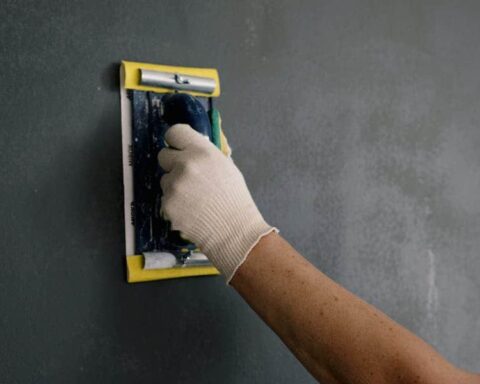Geothermal energy is an increasingly popular form of renewable energy used to create electricity and provide heat. But how does it work? To understand the process, it’s important to learn about geothermal wells. Geothermal wells are a type of well that taps into naturally occurring subsurface heat and use it to generate energy. They are typically installed in areas with a high concentration of geothermal energy, such as volcanically active regions, to take advantage of the available heat. This guide will provide an in-depth look at geothermal wells and the process of drilling and using them to generate energy. It will explain the basics of how the wells work, the costs associated with them, and the benefits of using geothermal energy. By the end of this guide, you will have a clear understanding of how geothermal wells work and how they can be used to create sustainable energy.
How Do Geothermal Wells Work?
Geothermal wells are drilled wells that tap into naturally occurring subsurface heat to generate electricity. As the water travels through the rock, it transfers heat to the formation. The heated water is then extracted and used in a variety of ways to create energy. The water can be pumped back down into the formation through a second well shaft to create a closed-loop system that continuously transfers heat to the water. This creates a geothermal energy well since the water is used to generate electricity and provide heat.
The Cost Of Installing And Operating A Geothermal Well
- The cost of installing a geothermal well varies widely depending on a number of factors. However, it is important to note that the initial costs of installing a geothermal well are significantly higher than those associated with other forms of renewable energy.
- This is primarily due to the cost of drilling the well itself. However, the long-term costs of installing and operating a geothermal well are much lower than those associated with other forms of renewable energy.
- The exact cost of installing and operating a geothermal well will depend on a number of factors, such as the depth of the well, the type of rock the well is being drilled into, the area you are drilling in, and whether or not you are drilling multiple wells.
Benefits Of Geothermal Wells
- Low Operating Costs: Geothermal wells require very little maintenance and are cost-effective to operate.
- Environmentally Friendly: Geothermal wells produce no emissions, making them an environmentally friendly source of energy.
- Reliability: The geothermal energy produced by a geothermal well is reliable and consistent, making it a dependable source of energy.
- High Efficiency: Geothermal wells are highly efficient, converting up to 90% of the heat from the subsurface into usable energy.
- Space Saving: Geothermal wells take up very little space compared to other forms of renewable energy sources such as solar panels or wind turbines.
- Adaptability: Geothermal wells can be adapted for use in a variety of applications, including heating and cooling buildings, heating swimming pools and hot tubs, and providing electricity for homes or businesses.
- Long Life Span: Geothermal wells are built to last for decades, providing a long-term energy solution.
- Low Noise: Geothermal wells produce very little noise, making them ideal for use in residential areas.
- Cost Savings: The cost of installing and operating a geothermal well can be significantly lower than other forms of renewable energy sources.
- Safety: Geothermal wells are generally considered to be safe as they are not exposed to the elements or potential hazards such as fire or explosions.
Environmental Impact Of Geothermal Wells
- The environmental impact of geothermal wells is minimal, especially when compared to other sources of energy. Geothermal wells use naturally occurring heat, which means there is no fuel extraction or pollution involved in the process.
- This means there is no pollution emitted from geothermal wells. Additionally, geothermal wells produce energy that is used for heating and electricity.
- This means the energy produced by the wells can be used for multiple purposes, which can help reduce energy costs in areas where the wells are installed.
- These wells do not produce toxic waste and do not rely on non-renewable sources of energy. This makes them a cleaner source of energy that can be used and reused indefinitely.
The Process Of Drilling A Geothermal Well
- The process of drilling a geothermal well varies by company, but there are a few general steps that are followed by all companies. The first step in the process is selecting a location to drill.
- Areas with a high concentration of geothermal energy are the best places to drill wells. Areas such as volcanic regions are especially good since they have the potential to produce extremely high temperatures.
- After the location is selected, the company will determine the best location to drill. This will depend on a number of factors, such as the size of the well and the depth at which the well will be drilled.
- The company will then use a drilling rig to begin digging the well. The depth of the well and the type of rock the company is drilling into will determine the length of the well and the type of rig used to drill it.
Different Types Of Geothermal Wells
- There are two main types of geothermal wells, open loop wells, and closed-loop wells. Open loop wells are used in areas with very high concentrations of naturally occurring heat. They are typically used to power single households or buildings.
- Closed loop wells are used in areas with relatively lower amounts of naturally occurring heat. They are used to power entire cities or industries. There are several different types of geothermal wells that can be used.
- These include open loop systems, closed-loop systems, and direct-use systems. Open-loop systems use groundwater to heat the building they are installed in while closed-loop systems circulate a liquid or gas through a series of pipes in order to heat the building.
- Direct-use systems take advantage of the natural heat found in geothermal reservoirs and can be used to directly heat buildings or provide hot water for other uses.
- Each type of system has its own unique advantages and disadvantages, so it is important to research each before deciding which one is right for your needs.
Steps For Making A Geothermal Well
- Choose a location – The first step in creating a geothermal well is to select a location. Areas with high concentrations of geothermal energy are the best places to drill wells, such as volcanic regions.
- Research the area – Researching the area is important to ensure that drilling can be done safely and efficiently. This includes looking at records such as temperature, depth, and rock type in order to determine how deep the well needs to be drilled and what type of equipment will be needed.
- Obtain permits – Depending on where you are drilling, you may need to obtain permits from local or state governments before you can begin drilling your geothermal well.
- Select a drilling rig – Once you have obtained all the necessary permits, it is time to select a drilling rig for your project. Different rigs are used depending on factors such as depth and rock type that you are drilling into.
- Drill the well – Once your rig is in place, you can begin drilling. Drilling the well can take anywhere from a few days to a few weeks depending on the size of the well and the type of rock it is being drilled into.
- Set up the geothermal loop – After your well is drilled, it is time to set up the geothermal loop. This involves connecting pipes from your geothermal well to your home or building and running them around underground to create a loop system that will transfer heat energy from your geothermal well into your building.
- Test and monitor – The final step in creating a geothermal system is to test and monitor it regularly to ensure that it is working correctly and efficiently. This includes checking for leaks, proper temperature levels, and other potential issues that could impact its performance.
Conclusion
Geothermal wells are wells that tap into naturally occurring subsurface heat and use it to generate electricity. Geothermal wells are created when water is pumped through a good shaft into a formation of porous rock. As the water travels through the rock, it transfers heat to the formation. The heated water is then extracted and used in a variety of ways to create energy. The water can be pumped back down into the formation through a second well shaft to create a closed-loop system that continuously transfers heat to the water. This creates a geothermal energy well since the water is used to generate electricity and provide heat.










